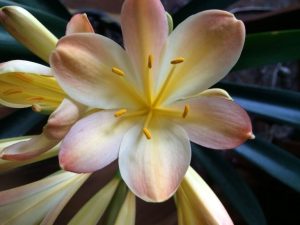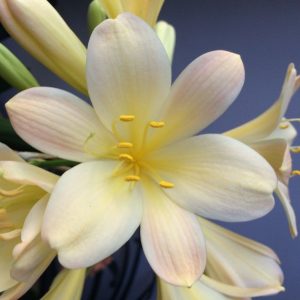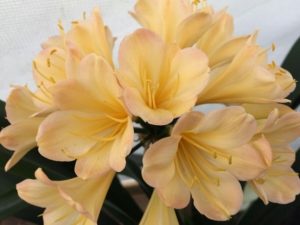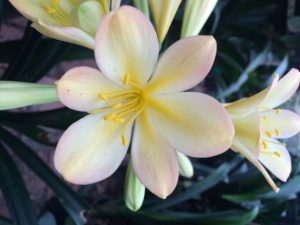Blush Clivia
Blush Clivia
Di Mathews
Clivia come in many exciting and sometimes new colours, but one particular colouration always manages to captivate enthusiasts, and this is the blush Clivia.
Blush Clivia are really a type of yellow or cream Clivia, with red anthocyanin pigments which appear on the edges of the petals, often intensifying as the flowers age. Some types, such as the Appleblossom types and some of the Chinese types have pigmented bases at germination and have pinkish coloured berries.
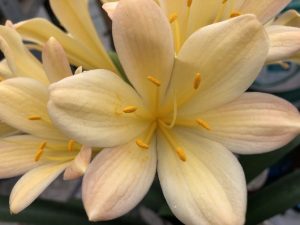
Appleblossom
The earliest and possibly the most well-known of the blush Clivia would have to be the Appleblossom group. This cultivar group (strain), which comprises eight plants code named Q1 to Q8, was found scattered among a wild population of orange Clivia miniata, with some Clivia nobilis all flowering at the same time in the former Transkei, Eastern Cape. They were collected by John Winter in the late 1990’s. The Appleblossom group have very large seeds and are slow growing. Many growers find they are more susceptible to rot than other Clivia.
The pale cream flowers are suffused with a blush of peach/pink on the edge of the petals. They were named by John Winter for their colour being similar to the colour of apple blossoms. The flowers of this group, although beautiful, have a fairly low flower count, and therefore often have a sparse head. Later breeding with this group over the years has improved the form of this plant, leading to a better shaped flower. They are highly sought after by enthusiasts.
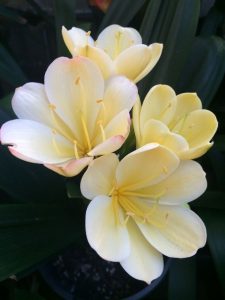
Chinese Blush
These have been imported over the years from breeders in China. They are mostly a squat shaped plant, with semi to broad leaves. The flowers are very beautiful and are often nearly white with a pink blush. There are several well-known breeders in China developing these types, and Eddie Pang, a keen collector and breeder from Melbourne, along with others such as Terry Edwards, are developing these Clivia. In addition to having beautiful flowers, these plants are also bred to have a desirable form, with broad glossy leaves in a fan shape. Chinese Blush can be fairly slow growing but are well worth the wait for flowering.
Japanese Blush
Possibly one of the most well-known breeders for blush type flowers in Japan is Mr Kazumi Hattori. The Japanese plants are bred to be quite compact, and again the form of the plant is considered important, with broad or semi broad dark green leaves. The Japanese blush Clivia have unpigmented bases at germination. The colouring of the flowers ranges from a delicate blush to a more pronounced deep pink
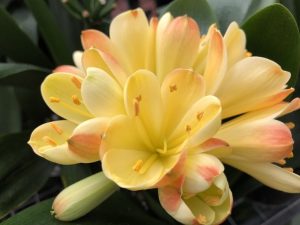
blush, but all are very beautiful.
I cannot talk about blush Clivia without mentioning another very well-known clone that is named ‘Gloria’. It was originally bred in the United States by Horace Anderson and was subsequently promoted by Victor Murillo. It is very similar to another desirable blush Clivia, and that is ‘Mopi Hirt’. ‘Mopi Hirt’ was apparently sourced from the United States and gifted to the late Mick Dower in South Africa. Questions are still raised and discussed whether in fact ‘Mopi Hirt’ and ‘Gloria’ are the same plant, as both originated in the United States, but the jury appears to still be out on this.
